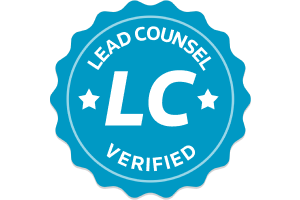for Over 25 Years
Settlement Value of California Personal Injury Claims

Settlement value of California personal injury claims is based upon many different factors, some factual and some legal. Approximately 95 percent of all personal injury claims or lawsuits will be resolved by way of a settlement at some point prior to trial. As I’ve pointed out in other posts, this is because the risk and costs associated with going to trial on a case are great for both the plaintiff (person claiming injury) and the defendant (person causing the harm). Personal injury cases in CA can and do go to trial but, the odds are in favor of settlement. While it is almost impossible to review every single thing that may be considered in coming up with a reasonable settlement value of any particular case, here are some of the main things lawyers for both injured parties and defendants (and their insurance companies) consider as follows:
Issues of Liability Which Influence the Settlement Value of Civil Claims in Cal:
- Clear Liability of A Single Defendant or Fault of More Than One Person (including Injured Party): Without finding legal fault, there is no reason to pay money damages to a person claiming injury. Therefore, liability plays a crucial factor in this process. If liability is clear (such as in a rear end collision), the value of the claim for settlement purposes will be higher than if there are arguments of comparative fault on the part of the injured person or arguments as to the fault of other people (in multiple defendant cases). (See related post: comparative negligence).
- Intentional or Reckless Misconduct: Claims that the defendant engaged in intentional or highly unsafe conduct that showed a reckless disregard for the rights and safety of others is a two-edged sword for the plaintiff. On the one hand, this may entitle the aggrieved person to seek punitive damages in addition to money to compensate for just out of pocket expenses and pain and suffering. On the other hand, almost any policy of insurance will exclude from coverage most intentional acts or even gross negligence claims and, if an insurance adjuster is assessing settlement value, they may not even factor the potential for punitive damages into the mix as a result.
- Apportionment of Fault (Prop. 51): Proposition 51 (now codified by law in California Civil Code 1431.2) mandates that, in multiple defendant cases, liability for “economic damages” is “joint and several” but, liability for “non-economic damages” is “several according to fault.” What does this mean? It means that if an injured person is suing two or more defendants, each of these persons or entities will be equally responsible for out of pocket damages like medical bills, lost wages, and cost of repair of property damages but, will only be responsible for “pain and suffering” to the extent of their legal percentage of fault. Therefore, if defendant “A” is found only 10 percent at fault by a judge or jury, they will only be responsible for 10 percent of the award for physical pain and emotional distress. This plays a big role in what each defendant is willing to offer to settle the claim.
Issues of Injuries and Damages That Affect The Value of Personal Injury Cases in CA:
- Nature and Extent of Injury and Prognosis: The costs of all the reasonably necessary medical treatment to date and the estimated cost of future medical treatment is essential in coming up with a value to place on a case. Treating doctors and experts hired by the insurance company and the attorney for the injured party provide their opinion as to what was necessary to treat the injury to date and what will be necessary to treat them in the future. Physical injury causing permanent impairment such as spine injury resulting in paralysis or brain damage obviously require long term care and may involve analysis by life care planners to determine value. Past jury verdicts for trials involving similar facts and injuries considered.
- Objective Findings To Support Complaints of Physical Pain: Pain is a subjective thing but, without some type of objective evidence to support the claim, insurance companies tend to not provide as much credence to these complaints. Objective findings usually come in the form of X-rays showing fractures, MRI films showing disc herniation or torn tendons or ligaments and other similar evidence.
- Medical History of the Victim: The prior medical history of the injury plaintiff comes into play if they are now claiming injury to a same or similar body part. Under California tort law, the negligent party is not responsible for prior medical problems unless they were made worse by the incident. However, it is up to the attorney for the victim through the use of medical testimony to argue that the condition was worsened. Likewise, CA law provides that the “tortfeasor” (person against whom the injury claim is brought) “takes the plaintiff as he or she finds him or her”. This means that if a prior medical condition made the injured person more susceptible to being injured at all or sustaining a worse injury than a normal, health person would have, the wrongdoer is still responsible.
- Plaintiff’s Age: The age of the injury victim comes into the analysis in several ways. Often, insurance carriers will argue that the injury is the result of “degenerative changes” (i.e. a consequence of just getting older) rather than the incident. If the victim has permanent impairment, the cost of treating or assisting that person must be multiplied over their reasonable life expectancy so, it plays a role in that respect as well.
- The Occupation of the Victim: The rate of pay and whether a person was salaried or an hourly employee factors into the amount of lost wages they may claim and the amount of lost earning capacity they may sustain in the future in the case of permanent, physical or mental impairment. Likewise, the job description and duties may affect the general or non-economic damages for disruption to lifestyle.
The “X Factors” On Valuation of Injury Claims in California
While all of the above issues are important and come into consideration in calculating how much a case is worth, there are many other factors that come into play including the following:
- The “Likeability” of the Person Claiming Injury: In a perfect world every person would get a ‘fair shake’ but, the reality is that insurance companies evaluate whether a plaintiff is “sympathetic” or not as a basis for determining value on a case. How an injured person presents at a deposition or at trial and whether or not they have a story to tell that will compel a jury to award a large verdict is something that carriers and insurance attorneys put into the mix.
- The Policy Limits of Insurance and the Assets of the Defendant: The reality of any case is that you must have a way to get paid. A judgment obtained against a person with no assets is not worth the paper it is printed upon. Insurance companies are usually only obligated to pay the upper limit of their coverage. As I have pointed out in other posts, though, (see here), making a legitimate demand for the policy limit puts pressure on the insurance company to settle or be subject to paying over the limit. All of these issues factor into settlement discussions and tactics.
- Who You Are Bringing the Claim Against: Juries are given specific instructions to to not consider the wealth of the defendant in calculating their verdict but, this doesn’t stop them from doing it anyway. On the average, statistics show that jury verdicts are higher against corporate or big business type defendants than they are against individuals without celebrity or “mom and pop” businesses.
- Location of the Trial: Again, all things being equal, two juries in two different locales who hear the same set of evidence should come to a same or similar verdict. In reality, there are certain “jury pools” in areas of California that tend to award more or less to injury victims just simply based upon demographics, bias and other issues.
- Attorney’s Reputation and Experience: There are thousands of attorneys and law firms in California that purport to represent personal injury victims. Insurance companies are keenly aware of the ones who will simply take whatever is being offered for settlement and “move on” and those that will litigate and fight cases through trial and appeals if necessary to win. As a practical business decision, carriers will tend to offer more to those who have a consistent track record of success in zealously prosecuting legitimate claims.
What Types of Damages Can I Recover in a California Personal Injury Claim
- Economic Damages: Economic damages are the hard money losses that result from a personal injury event. They include things like medical bills (present and future), lost income or earning capacity, damage to property (such as a motor vehicle), cost of purchasing medical devices such as wheelchairs, walkers, crutches, etc. and any other out of pocket expenses related to your injury.
- Non-Economic Damages: This is the so called “pain and suffering” damages but, include the following: physical pain/mentalsuffering/loss of enjoyment of life/disfigurement/physical impairment/inconvenience/grief/anxiety/humiliation/emotional distress. Both present and future non-economic damages are able to be awarded. No fixed standard exists for calculating non-economic damages. A jury must decide what they think is a reasonable amount. With insurance claims adjusters, there is usually a correlation of between 2-3 times the medical expenses on the calculation of these damages for settlement purposes.
- Punitive Damages: In rare cases such as DUI drivers injuring someone or other egregious conduct like assault and battery, additional damages may be awarded as a means of punishing the defendant.
What are Some Average Jury Verdicts and How Does This Play into The Value of My Claim?
Studies have been done to determine the average jury award in personal injury cases in California. These show that, on average, juries in California award about $150,000 in non-economic damages (higher than the national average). However, verdicts in California vary widely from million dollar plus awards to the low to mid five figures. Therefore it is hard to put and “average” on it. All the above factors come into play including the reputation of your attorney and their trial record.
The importance of getting quality legal representation and advice to maximize settlement value of a California personal injury claim:
The above is certainly not even everything that goes into the analysis of settlement value on any particular claim but, it certainly give you an idea about how much goes into this process. Without an attorney that is experienced and familiar with these issues, a personal injury victim has no chance in obtaining the maximum value to compensate them for their injuries. Steven M. Sweat, APC is a California personal injury law firm that has proven itself in this regard. For a free consultation or evaluation of any claim call us statewide at 866-966-5240 or 310-592-0445.












